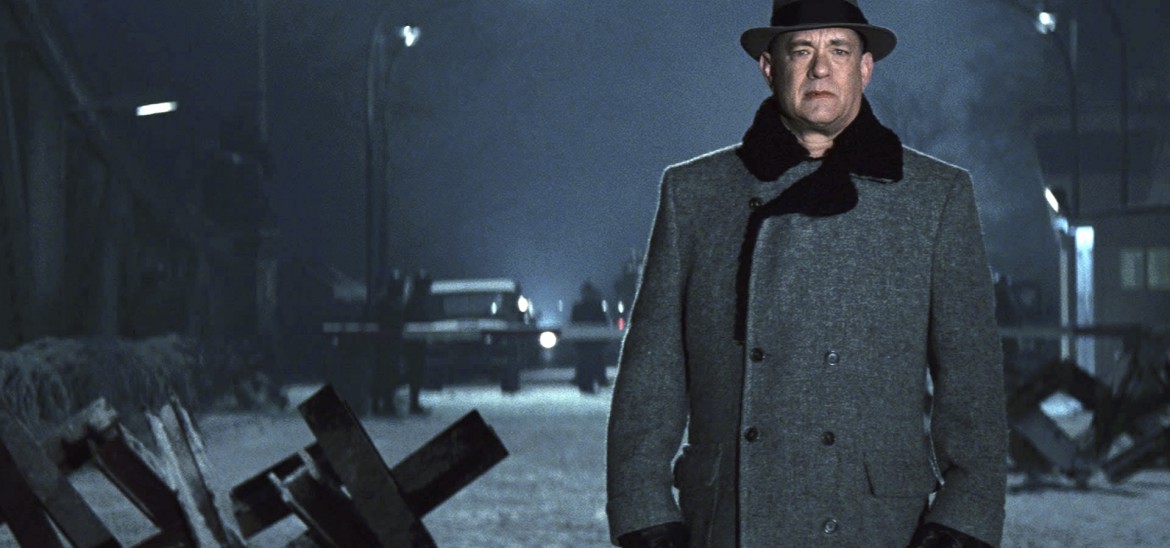Into Film Clubs
Find out everything you need to know about starting an Into Film Club.



Bridge of Spies is a Cold War thriller from director Steven Spielberg. Based on a true story, it stars Tom Hanks as James Donovan, a lawyer brought in to represent Rudolf Abel, a Soviet spy being put on trial in the United States in 1957. A few years later, Donovan is asked to go to Berlin to negotiate the exchange of Abel for Francis Gary Powers, an American pilot captured when his spy plane went down in Soviet Russia. A tense and highly sensitive situation (punctuated in the film by a surprising amount of humour) becomes even more complicated when an America student visits his girlfriend in East Berlin and finds himself forbidden to travel back...
The murky, paranoid, cat-and-mouse era of the Cold War has long been a fixture of cinema, with plots often focusing on urban dramas centred around a spy protagonist. Examples of these (many of which influenced Bridge of Spies) include The Ipcress File, Tinker Tailor Soldier Spy, The Spy Who Came In From The Cold and The Conversation, all films known for their understatement, quietness and focus on the mysterious playmakers behind the scenes.
The real James Donovan was a lawyer who participated in the 1945 Nuremberg trials before retreating for a quieter life in insurance - at least until the request to represent Abel in court came through, that is. Only required to provide cursory representation, Donovan successfully prevented Abel from being executed, taking his case all the way to the Supreme Court. Following the events of Bridge of Spies, Donovan successfully negotiated the release of thousands of prisoners caught up in the Bay of Pigs crisis, partly through winning the confidence of then Cuban leader, Fidel Castro.
This ability to communicate with people in ways that others could not, focusing on the importance of each individual - as well as his humble, family-led approach to life - make Donovan a classic Spielberg leading man. Films such as Schindler's List, Munich, Lincoln and now Bridge of Spies are all partly characterised by their focus on the behind-the-scenes strategies, and their leads' individual struggles to drive through change and to stand up for what is right. Many of Spielberg's more mature, serious films provide relatable, human insights into world events of often bewildering complexity and horror, not seeking to over-analyse or become bogged down in contentious intellectual debate.
These leading men are often characterised by their decency, strength of mind and trustworthiness - qualities perhaps associated with the persona of Tom Hanks more than any other actor. This is the fourth film Hanks and Spielberg have made together, following Saving Private Ryan, Catch Me If You Can and The Terminal. However, there is a more ironic, cynical, quietly rebellious side to their characters than is often overlooked, with many accusing Spielberg of being excessively drawn to sentimentality. Another striking elements of Bridge of Spies is the manner in which so many scenes in the film appear to mirror one another, in ways that complicate the notion that the film is a simplistic exercise in patriotism.
Indeed, the film contains many parallels to concerns in today's world. Trial by media, the fickleness of public opinion, surveillance, the illegal detention of citizens, government use of enhanced interrogation techniques, and issues around border controls and freedom of movement are all themes in the film which dominate much of the contemporary political landscape. Spielberg did not set out to make the film because of these parallels, but merely acknowledged that they are undoubtedly a part of the story.
Keep your eyes peeled during a scene where Tom Hanks walks past a Berlin cinema. The films on display are not just randomly chosen - they make subtle points of their own. Spartacus was written by Hollywood screenwriter Dalton Trumbo, a man blacklisted by the American government because of his communist sympathies. The other film is Eins, Zwei, Drei (One, Two Three), a film where an American business executive working in East Berlin must cross over and negotiate with Soviet officials for the release of a political prisoner. That was made by Billy Wilder, an Austrian director who fled persecution by Nazi Germany to go to Hollywood, where he went on to make films such as Some Like It Hot and The Apartment.
One of the most compelling presences in the film is Mark Rylance. A relatively unknown face on the big screen, Rylance has had a reputation as one of the truly great actors on the stage for many years. Spielberg first approached him in 1987 for a role in Empire of the Sun, but such was his commitment to the theatre, he said no. As a result of their collaboration on Bridge of Spies, Spielberg cast Rylance as the title role in the new version of Roald Dahl's The BFG, a giant role that could bring him to a larger audience than he has ever experienced.
The initial script was written by British playwright Matt Charman, in what is just his second film. Despite his relative inexperience, the story he constructed was compelling enough to persuade Spielberg to direct. To add more layers and texture, Spielberg brought in iconic filmmakers the Coen brothers, even though the duo's wry, sardonic view of the world might seem at odds with the perceived warmth of Spielberg's. Many Coens fans may watch the film trying to guess which elements of the script might have come from them - particularly its humour - but in actual fact, much of this was in Charman's original script, and the final draft was very much an equal collaboration.
The film is full of intriguing slices of history. We see how Abel would receive coded messages from the KGB inside a hollowed out American coin. It was in fact through a newspaper boy receiving the coin and thinking it felt too light to be real that the FBI were first alerted to Abel in 1953. The boy dropped the coin and it split open to reveal the coded message inside. However, it took the FBI four years to crack the code that eventually led to Abel's arrest.
Filming took place in a number of real locations from the story. Although Wroclaw in Poland had a closer resemblance to the Berlin of the time and was used to film crucial sequences in and around the Berlin wall, filming of the actual exchange of spies took place at the real location, the Glienicke Bridge, from which the film takes its name.
Several other regular Spielberg collaborators also return for Bridge of Spies: director of photography Janusz Kaminski has been the cinematographer on every Spielberg film since Schindler's List, while Michael Kahn has edited more than twenty of his films over an almost forty year period, stretching back to Close Encounters of the Third Kind. However, composer John Williams - arguably Spielberg's most famous collaborator - did not work on Bridge of Spies due to health concerns. This is only the third time Spielberg has made a film without Williams (the others being his debut film Duel, and 1985's The Color Purple), but he is ably replaced by Thomas Newman, fresh from providing the score for Spectre. Kaminski and Kahn both return for 2016's The BFG, as does John Williams. We cant wait!
Explore the themes of the film further with our Into Film Recommends podcast below, or login to SoundCloud to download the podcast and listen on the go.
The Into Film Recommends Podcast Series is also available on iTunes.
We cannot guarantee that all films discussed in this article are covered by the PVSL and are part of our catalogue, but where possible we aim to ensure that this is the case.
Viewing 4 of 4 related items.

Get in touch with your article ideas for the News and Views section.